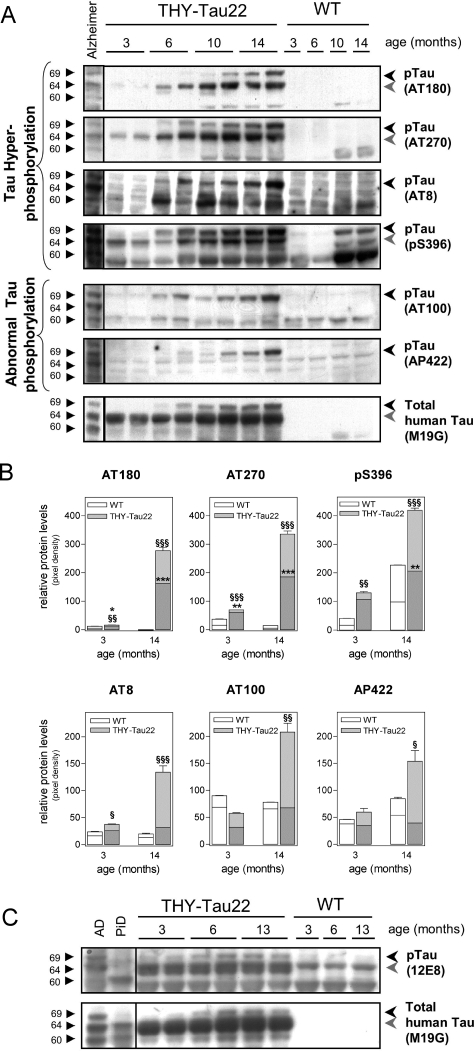Figure 4-6933.
Increase of tau hyperphosphorylation and abnormal tau phosphorylation in the aged THY-Tau22 mouse brain. A: Immunoblot analysis of the major AD-relevant tau phosphorylation epitopes. Hyperphosphorylation of tau in cortex at sites Thr231 (AT180), Thr181 (AT270), Ser202/Thr205 (AT8), and Ser396 are detectable from 3 to 6 months and increase with age. Only phosphorylation of murine tau-Ser396 can be detected in aged WT. Abnormal tau phosphorylation at sites Thr212/Ser214 (AT100) and Ser422 (AP422/988) starts at 6 to 10 months. The levels of total human tau protein increase slightly with age in THY-Tau22 mice. Brain homogenate from an AD patient is loaded in the first lane. Triplets of hyperphosphorylated tau isoforms are indicated (69, 64, and 60 kd). Most antibodies detect a duplet of hyperphosphorylated tau in mice, indicated by the black and gray arrowheads. B: Quantification of site-specific tau phosphorylation of three individual blots with at least five animals per age and genotype. Densities of the 64 (bottom bars in dark gray; * = significance) and 69-kd band (top bars in light gray, § = significance) were determined in duplicates. Background noise was subtracted for each lane (unpaired Student’s t-test, */§P < 0.05, **/§§P < 0.01 and ***/§§§P < 0.001). C: Immunoblot of 12E8, an antibody that detects phosphorylation of Ser262 and Ser356, which are microtubule-binding domains 1 and 3. 12E8 allows for the discrimination between AD and PiD. Old tau Tg revealed a phosphorylation profile that is comparable to that found in AD. Note that even endogenous murine tau is detected in the WT and Tg. Representative immunoblots are shown.

